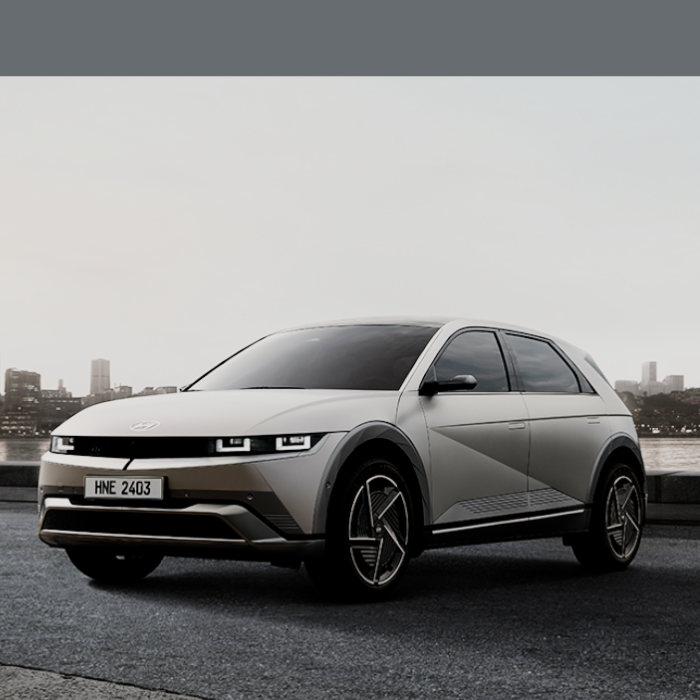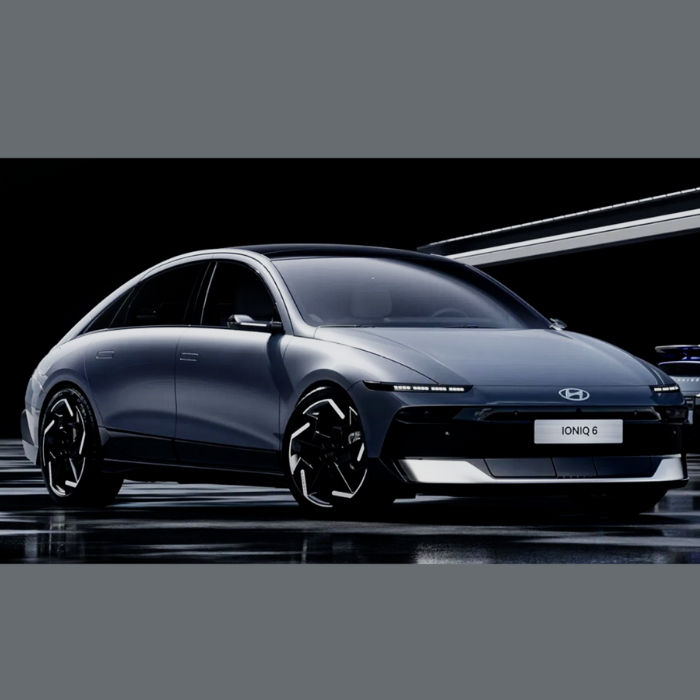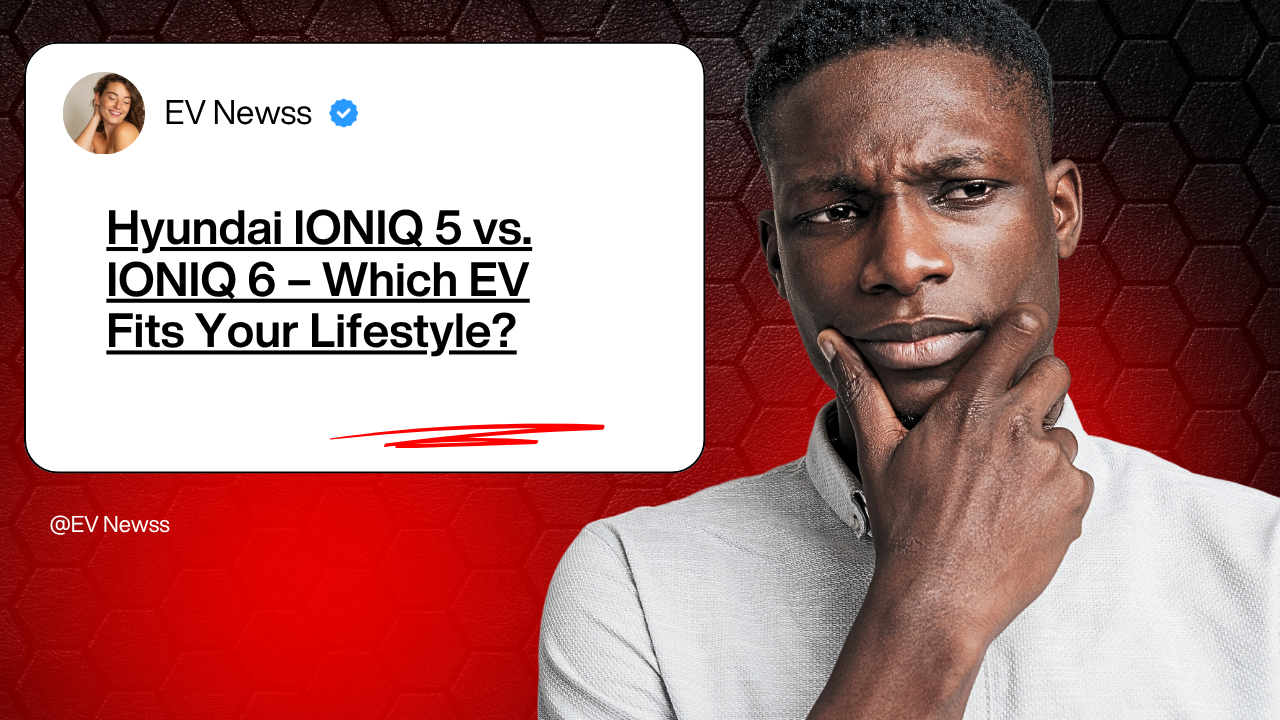As electric vehicles continue to gain popularity in the United States, Hyundai has firmly established itself as a leader in affordable, stylish, and practical EVs. Two of its most talked-about models — the Hyundai IONIQ 5 and the IONIQ 6 — offer distinct design philosophies and user experiences. While they share the same E-GMP platform and similar technology underpinnings, their body styles and lifestyle appeal are worlds apart.
Whether you’re looking for a daily commuter, a family hauler, or something sleek and sporty, the decision between the IONIQ 5 and IONIQ 6 isn’t always straightforward. This in-depth 2025 comparison will help you understand the real-world pros and cons of each model so you can make a decision that aligns with your lifestyle and needs.
1. Body Style and Design Language
IONIQ 5 – Retro Futuristic Crossover

The IONIQ 5 is often described as a “hatchback on steroids.” But in reality, it’s a mid-size crossover with the stance of a small SUV and the styling cues of an 80s concept car. The angular lines, pixelated LED lights, and short overhangs give it a distinctive retro-modern appeal.
Highlights:
- Boxy proportions maximize cabin space
- Stands taller for improved visibility
- Crossover design appeals to families and utility-focused buyers
IONIQ 6 – Streamlined Electric Sedan

In contrast, the IONIQ 6 is a low-slung, aerodynamic sedan that brings a sense of fluidity and movement, even at a standstill. It’s designed for those who appreciate performance, elegance, and minimalist aesthetics.
Highlights:
- Teardrop shape offers low drag coefficient (as low as 0.22)
- Sits closer to the ground with a sportier stance
- Ideal for solo commuters or couples prioritizing range and style
Verdict:
Choose the IONIQ 5 if you prefer upright driving positions and utility. Opt for the IONIQ 6 if you value aerodynamics and sleek design.
2. Interior Space and Comfort
Seating and Passenger Room
Both vehicles offer generous cabin space thanks to the flat E-GMP platform and long wheelbase. However, the IONIQ 5 feels more open and versatile inside.
- IONIQ 5:
- Rear seats recline and slide
- More headroom due to SUV shape
- Lounge-style front seats for relaxation during charging
- IONIQ 6:
- Lower roofline limits headroom in the rear
- Tighter ingress/egress due to coupe-like doors
- More cocoon-like, driver-focused cockpit
Cargo Space
- IONIQ 5:
Approx. 27.2 cubic feet behind the rear seats, expandable to over 59.3 cu ft when folded. - IONIQ 6:
Smaller trunk volume (~11.2 cu ft) due to sedan configuration, but includes a front trunk (frunk).
Verdict:
IONIQ 5 wins for utility, passenger comfort, and flexible cargo space. The IONIQ 6 caters more to drivers looking for a personal or luxury feel.
3. Real-World Range and Efficiency (2025 Updates)
While both EVs offer similar battery configurations, the IONIQ 6 consistently delivers better range due to its aerodynamic efficiency.
Battery and Powertrain Options (U.S. 2025)
| Model | Battery | RWD Range (EPA) | AWD Range (EPA) |
|---|---|---|---|
| IONIQ 5 SE/SEL | 77.4 kWh | ~303 miles | ~266 miles |
| IONIQ 6 SE | 77.4 kWh | ~361 miles | ~316 miles |
- IONIQ 6’s sedan shape gives it a ~15% efficiency advantage in highway cruising.
- The IONIQ 5 AWD is more range-compromised due to its heavier build and less aerodynamic frame.
Verdict:
If maximizing range is your priority, especially for long highway commutes, the IONIQ 6 outperforms the IONIQ 5 on paper and in real-world tests.
4. Performance and Driving Dynamics
Acceleration & Handling
- Both models offer dual-motor AWD versions with ~320 hp and 446 lb-ft of torque.
- 0–60 mph times hover around 5.1 seconds in AWD trims.
- The IONIQ 6 feels more planted and agile in corners due to its lower center of gravity and sedan chassis.
- The IONIQ 5 is more softly sprung, tuned for comfort over sport.
Ride Quality
- IONIQ 5: Smooth and floaty over rough roads. Great for city potholes and long-distance cruising.
- IONIQ 6: Slightly stiffer suspension. Better for highway stability and twisty roads.
Verdict:
Sporty drivers will prefer the IONIQ 6. Families or those prioritizing comfort will appreciate the IONIQ 5.
5. Infotainment, Tech, and Driver Assistance
Both vehicles feature Hyundai’s dual 12.3-inch screens, OTA updates, and voice commands. Key tech is largely identical, but the layout and feel differ.
- IONIQ 5:
- Wide, flat dashboard
- Larger center console space with moveable unit
- Panoramic glass roof (optional)
- IONIQ 6:
- More cocooned design, wrap-around dash
- Digital side mirrors available in some trims
- Better sound isolation at high speeds
Driver assistance features include:
- Highway Driving Assist 2
- Adaptive Cruise Control
- Blind Spot View Monitor
- Remote Smart Parking Assist
Verdict:
Tech parity is near equal. Layout preference will depend on whether you prefer an open vs cockpit-like cabin.
6. Charging & Real-World Convenience
800V Architecture
Both EVs support ultra-fast DC charging at up to 350 kW:
- 10% to 80% in approx. 18 minutes under ideal conditions.
V2L (Vehicle to Load)
- Both IONIQs offer external power outlets, enabling laptops, camping gear, or even powering your home in emergencies.
Charging Network Access
Hyundai EVs now support Tesla Supercharger access (via NACS adapter) as of mid-2025. Both vehicles come with access to Electrify America and partner networks through the Hyundai EV Route Planner.
Verdict:
Both vehicles are future-ready when it comes to charging. Your lifestyle (home vs public charging) should guide your decision more than speed alone.
7. Price & Value in 2025
| Model & Trim | Starting MSRP (Est. 2025) | Federal Tax Credit | Net Price |
|---|---|---|---|
| IONIQ 5 SE RWD | $41,500 | Eligible ($7,500) | ~$34,000 |
| IONIQ 6 SE RWD | $38,900 | Eligible ($7,500) | ~$31,400 |
| AWD Trims | +$3,500–$4,000 | Eligible | Varies |
Both models qualify for the IRA Clean Vehicle Tax Credit when manufactured in North America (confirmed for 2025 models).
Verdict:
The IONIQ 6 offers more range for less money. But the IONIQ 5 provides better practicality for families and cargo.
8. Lifestyle Match – Which EV is for You?
Choose the Hyundai IONIQ 5 if:
- You need more interior space or cargo flexibility
- You plan to go camping or travel with pets/kids
- You prioritize comfort and visibility over sporty handling
Choose the Hyundai IONIQ 6 if:
- You commute long distances and need maximum range
- You want a sportier, sleeker aesthetic
- You’re driving mostly solo or as a couple and value efficiency
Conclusion: EV Twins with Different Souls
While the Hyundai IONIQ 5 and IONIQ 6 are cut from the same EV cloth, they serve very different audiences. The IONIQ 5 is your modern family car with SUV versatility, while the IONIQ 6 is a driver-focused EV that maximizes range and style.
In 2025, with rising fuel costs and growing EV infrastructure, either choice is a smart one. But your daily routine — and how you envision yourself using your EV — will ultimately dictate the better fit.
Frequently Asked Questions (FAQs)
Q1. Is the IONIQ 6 better than the IONIQ 5 for long-distance driving?
Yes, due to its superior aerodynamics, the IONIQ 6 offers more range on a full charge, making it better for highway driving and commuting.
Q2. Can both the IONIQ 5 and IONIQ 6 charge at Tesla Superchargers in 2025?
Yes. As of mid-2025, Hyundai EVs support the NACS connector and have access to Tesla’s Supercharger network via adapters.
Q3. Which one is more suitable for families?
The IONIQ 5, thanks to its higher cargo space, better rear headroom, and upright seating, is more suitable for families and those needing more practicality.
Q4. Do both models qualify for the federal EV tax credit in the U.S.?
Yes. As long as they are built in North America (which Hyundai has confirmed), they are eligible for the $7,500 IRA tax credit in 2025.
Q5. Which one has better resale value?
Current trends suggest both will hold value well due to their tech, but the IONIQ 6 may have an edge due to its higher range and efficiency in used markets.
